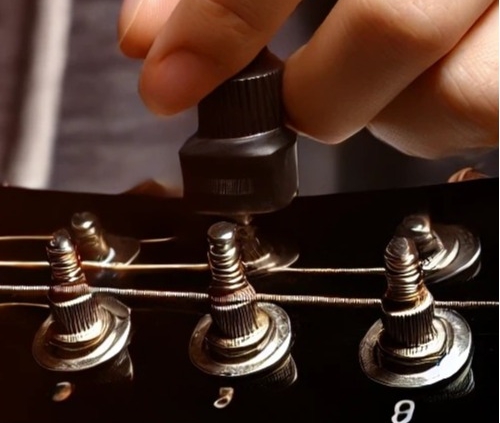Understanding and Achieving Perfect Guitar Intonation
Guitarists know that tuning is a fundamental aspect of playing, but achieving accurate tuning across the entire fretboard involves more than just adjusting the tuning pegs. Guitar intonation plays a crucial role in ensuring that your instrument produces harmonious and in-tune sounds up and down the neck. In this blog post, we’ll delve into the concept of guitar intonation, demystify its importance, and provide you with valuable insights on how to achieve optimal tuning accuracy.
What is Guitar Intonation?
Guitar intonation refers to the instrument’s ability to play in tune at every fret and position on the neck. In an ideally intonated guitar, open strings and fretted notes should all be in tune relative to each other. When intonation is off, fretted notes can sound slightly sharp or flat, leading to dissonance and an overall lack of harmony.
Causes of Intonation Issues
Intonation problems can stem from a variety of factors, including the guitar’s setup, string gauge, and changes in temperature and humidity. Additionally, improper string height and saddle positioning can contribute to inaccurate intonation. Here are some common causes:
- String Gauge: Heavier or lighter strings than what the guitar was set up for can cause intonation issues.
- Action Height: If the string action is too high or too low, it can affect intonation.
- Bridge Position: Incorrect saddle placement can lead to intonation problems.
- Neck Relief: The amount of bow in the neck affects string length and tension, influencing intonation.
- Wear and Tear: Over time, the guitar components can wear down and affect intonation.
Adjusting Intonation
To adjust your guitar’s intonation, you’ll need to make changes to the length of the strings. Most electric and acoustic guitars allow for individual saddle adjustments on the bridge. For each string, follow these steps:
Tune the Open String
Use a reliable tuner to ensure that the open string is in tune.
Fret the 12th Fret
Press the string down at the 12th fret and check its pitch. It should ideally match the open string’s pitch.
Compare and Adjust
- If the fretted note is sharp compared to the open string, the string is too short and needs to be lengthened.
- If the fretted note is flat, the string is too long and needs to be shortened.
Adjust the Saddle
Loosen the string and adjust the saddle’s position accordingly. Moving the saddle towards the neck lengthens the string, while moving it away from the neck shortens the string.
Retune and Test
After adjusting the saddle, retune the string and fret it at the 12th fret again. Repeat the process until the fretted note matches the open string’s pitch.
Check All Strings
Remember to adjust the intonation for all strings individually, as each string’s tension and characteristics can differ. Intonation adjustments can affect the overall balance of your guitar’s tuning.
Regular Maintenance
Intonation isn’t a one-time fix. Changes in string gauge, temperature, humidity, and general wear and tear can affect your guitar’s intonation over time. Regularly checking and adjusting intonation is essential to maintain accurate tuning.
Seek Professional Help
If you’re unsure about adjusting intonation yourself, or if you’re experiencing persistent intonation issues, consider seeking help from a professional guitar technician. They have the expertise and tools to ensure precise intonation.
Conclusion
Guitar intonation is the key to achieving harmonious and accurate tuning across the fretboard. By understanding the causes of intonation issues, learning how to adjust saddle positions, and making regular maintenance a part of your routine, you’ll be well on your way to enjoying a guitar that sounds in tune and resonates beautifully in every position. Whether you’re strumming chords, playing intricate melodies, or soloing with finesse, proper intonation is the foundation that ensures your guitar delivers its best performance, making your musical journey all the more satisfying.
—
If you want to set up a free trial lesson either in person or online, simply fill out this form and we’ll get back to you within 24 hours. You’ve got nothing to lose and an amazing musical world to gain. 🙂

